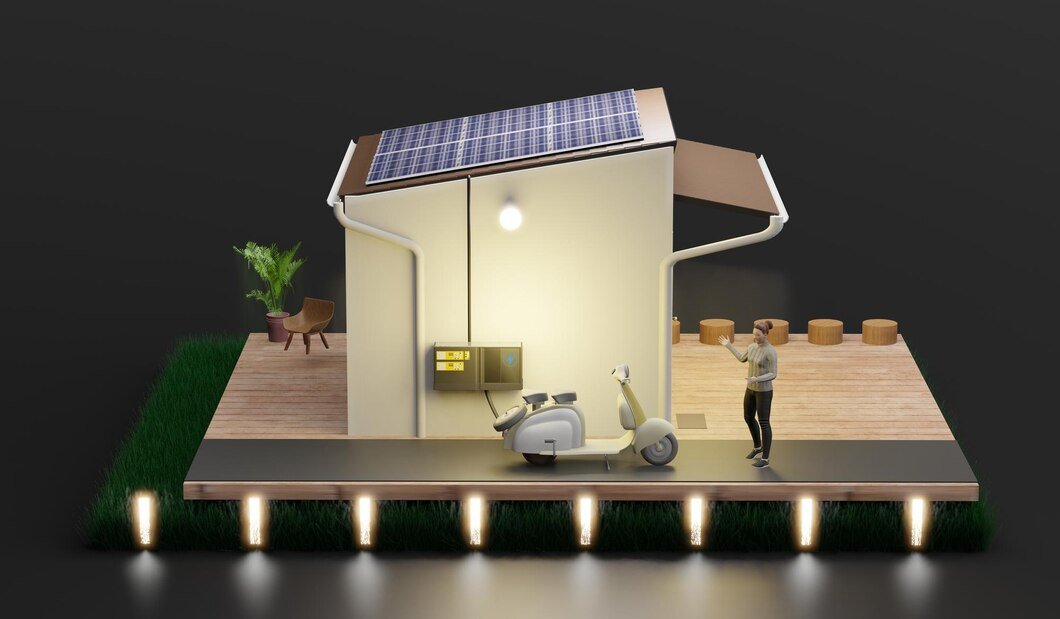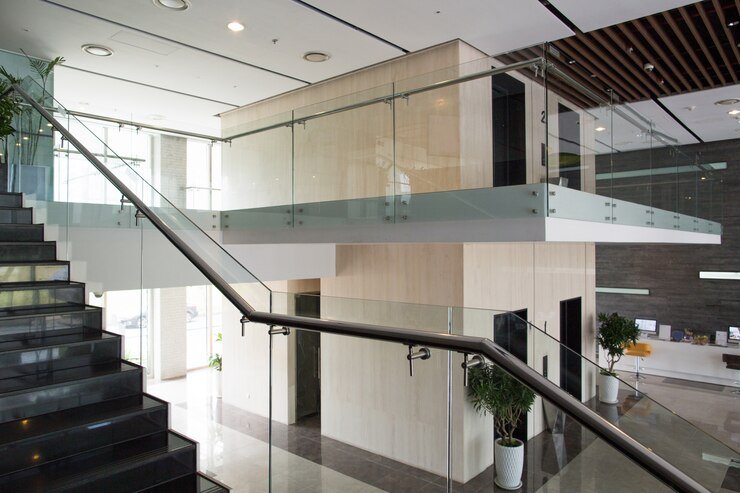Home
Transform Your Space A Comprehensive Guide to Room Painting
Room painting is a powerful and cost-effective way to refresh and redefine the ambiance of any living space.

Introduction
Room painting is a powerful and cost-effective way to refresh and redefine the ambiance of any living space. Whether you re looking to add a pop of color create a soothing atmosphere or simply update the overall look the process of room painting offers a myriad of possibilities. In this guide we will explore key aspects of room painting from color selection to execution helping you achieve the desired aesthetic for your home.
Choosing the Right Colors
Choosing the right colors for your living space is a pivotal decision that sets the tone for the entire ambiance of a room. The psychology of color plays a crucial role in influencing emotions and perceptions making the selection process a thoughtful and creative endeavor. In this guide we will delve into the art of choosing the right colors to create a harmonious and visually pleasing environment in your home
Understanding Color Psychology

Before embarking on your color selection journey it essential to understand the psychological impact of different hues. Warm colors like reds oranges and yellows are known to evoke energy and warmth making them ideal for social spaces. On the other hand cool tones like blues and greens promote calmness and tranquility making them suitable for bedrooms and relaxation areas. Neutral colors such as grays whites and beiges offer versatility and a timeless backdrop for various design styles
Consider the Room’s Purpose
The purpose of the room should guide your color choices. For example a vibrant and lively color scheme might be well suited for a dining or entertaining area while serene and calming colors are more appropriate for bedrooms and bathrooms Consider the activities that will take place in the space and how you want people to feel when they enter.
Create a Cohesive Palette
Maintaining a cohesive color palette throughout your home contributes to a sense of unity and flow. While each room can have its unique color scheme incorporating complementary or analogous colors ensures a seamless transition between spaces. Consider the color wheel as a valuable tool to guide your choices adjacent colors on the wheel harmonize well while those opposite each other create vibrant contrasts.
Test Samples in Different Lighting

Colors can appear different under various lighting conditions so it crucial to test paint samples in the actual room and observe them at different times of the day. Natural daylight artificial lighting and evening illumination can all impact how a color is perceived. This step helps you avoid unpleasant surprises and ensures that the chosen colors look appealing in all lighting situations.
Small and Large Swatches
When testing colors paint small swatches directly on the wall and observe them in the context of your furnishings and decor. Additionally consider creating larger swatches to get a better sense of how the color will cover the entire wall. This step allows you to evaluate the color in relation to the room size and other design elements.
Personal Expression and Trends
While color trends come and go it essential to prioritize your personal preferences and the overall aesthetic you want to achieve. Trends can provide inspiration but the colors you choose should resonate with your style and create a space that feels authentic to you. Balance trendy accents with timeless base colors to ensure longevity in your design
Choosing the right colors for your living space is an exciting and personal journey that involves understanding color psychology considering the room purpose creating a cohesive palette and testing samples in various lighting conditions. By embracing your creativity and taking the time to explore different options you can transform your space into a visually appealing and emotionally resonant haven that reflects your unique personality and style.
Selecting the right colors is a crucial step in the room painting process Consider the purpose of the room and the mood you want to evoke. For instance cool tones like blues and greens can create a calm and tranquil atmosphere in bedrooms while vibrant colors like reds and yellows can add energy to living spaces. Neutral tones such as grays and whites offer versatility and can serve as a timeless backdrop for various design elements
Preparing the Room
Embarking on a room painting project is an exciting endeavor that promises a fresh vibrant transformation. However the key to a flawless finish lies in the preparation of the room. Adequate preparation ensures a smooth canvas for your chosen colors enhances paint adhesion and contributes to the longevity of the finished product. In this guide we ll explore the essential steps involved in preparing the room for painting setting the stage for a professional and polished result.
Cleaning and Clearing
The first step in preparing a room for painting is to clear the space and remove any obstacles. Move furniture to the center of the room or ideally out of the space entirely Take down curtains blinds and any wall decorations. This not only provides you with a clean slate for painting but also protects your belongings from accidental splatters.
Surface Inspection and Repair

Thoroughly inspect the surfaces you plan to paint. Look for cracks holes or imperfections in the walls. Use spackle or joint compound to fill in any gaps and sand the surface once it dry to create a smooth and even texture. Addressing these issues before painting contributes to a more professional looking finish.
Cleaning the Walls
Clean walls may appear clean but a deeper clean is often necessary to remove dust dirt and grease. Use a mild detergent or a mixture of water and vinegar to clean the walls focusing on areas near light switches and corners where dirt tends to accumulate. This step ensures better paint adhesion and a more uniform finish.
Priming for Success
Priming is a crucial step in preparing the room for painting especially if you re dealing with a new surface repaired areas or a drastic color change. Primer creates a stable base for the paint improves adhesion and enhances the durability of the final coat. Choose a primer that suits your specific needs such as stain blocking or high adhesion primers.
Protective Measures
Before you start applying primer and paint take the time to protect surfaces that won t be painted. Use painter tape to cover edges trim and any areas you want to keep paint free. Lay down drop cloths or plastic sheets to safeguard flooring and furniture. These protective measures not only prevent accidental spills but also contribute to a neater and more efficient painting process.
Ventilation and Safety
Ensuring proper ventilation is vital during the preparation phase. Open windows and doors to allow fresh air to circulate especially if you re working with cleaning agents or paints with strong odors. Additionally wear appropriate safety gear including goggles and a mask to protect yourself from dust and fumes.
Preparing the room for painting is a crucial step that sets the stage for a successful and visually appealing result. By clearing the space inspecting and repairing surfaces cleaning thoroughly applying primer and implementing protective measures you create a foundation for your paintwork that ensures durability and a professional finish. Taking the time for meticulous preparation not only enhances the aesthetic outcome but also adds to the overall satisfaction of the painting process.
Before diving into the painting process proper preparation is essential. This includes cleaning the walls to remove any dust or grime, filling in cracks or holes with putty and applying a primer to create a smooth and even surface for the paint. Adequate preparation ensures better adhesion and a more professional-looking finish.
Choosing the Right Paint

Selecting the right type of paint is equally important. Water based paints are popular for their easy cleanup and low odor while oil based paints provide a durable finish making them suitable for high traffic areas. Consider the sheen as well flat finishes hide imperfections but may be harder to clean while glossier finishes are more washable but may highlight flaws.
Tools and Techniques
Investing in quality painting tools can make a significant difference in the final result. Brushes rollers and painter tape are essential for achieving clean lines and even coverage. Proper technique such as cutting in along edges before using a roller ensures a polished look. Experimenting with different textures or techniques such as color blocking or accent walls can add depth and interest to the room.
Finishing Touches
Once the paint has dried it time for the finishing touches. Remove painter tape carefully to reveal crisp lines and touch up any imperfections. Consider adding decorative elements like stencils or decals for a personalized touch. Additionally rearranging furniture and incorporating new decor can complement the freshly painted space.
Maintenance and Longevity
Proper maintenance can extend the life of your painted walls Regular cleaning with a mild detergent helps preserve the finish and prompt touch-ups can address any nicks or scratches. Staying mindful of sunlight exposure can prevent fading over time especially for rooms with large windows
Conclusion
Room painting is a transformative process that allows you to express your style and enhance the overall feel of your living space. By carefully selecting colors preparing the room adequately using the right tools and techniques and paying attention to finishing touches you can create a visually appealing and inviting environment. So roll up your sleeves choose your palette and embark on the journey of transforming your room through the art of painting.
Home
The Benefits and Techniques of Roof Cleaning for Home Maintenance
The Benefits and Techniques of Roof Cleaning for Home Maintenance

Introduction to Roof Cleaning
Over time, the once pristine appearance of a home’s roof can diminish, succumbing to the relentless forces of nature. Roof cleaning, an often overlooked aspect of home maintenance, is essential for safeguarding this barrier’s structural integrity and aesthetic appeal.
It’s not just about curb appeal; a well-maintained roof can prevent many issues, from water damage to costly energy inefficiencies. A professional service, knowledgeable in the intricacies of roof washing, becomes not just a luxury but a necessity for the proactive homeowner.
Dirty roofs detract from a home’s charm and accelerate wear and tear. Roof cleaning is crucial to prevent elements and extend roofing materials’ lifespan. Properly addressed, roof cleaning can enhance functionality and safety for all beneath it.
Key Takeaways:
- Understanding the significance of roof maintenance for home preservation.
- Exploring various roof cleaning methods and choosing the best option.
- Emphasizing safety, environmental sustainability, and the value of professional intervention in roof cleaning.
Choosing the Right Method
Selecting the proper cleaning method for a roof is crucial. Pressure washing can remove years of dirt and grime, but it can harm the shingles. Soft washing uses a safe, lower-pressure wash with cleaning agents to dissolve stains while protecting the roof. The choice depends on the roofing material and condition. Consulting with professionals can help you choose the most effective and gentle option for a thorough, non-damaging cleaning experience.
Safety Considerations
Cleaning a roof poses significant hazards, including falls, injuries, and potential property damage. Expert roof cleaners, trained and equipped with necessary safety equipment, handle these risks effectively, ensuring thorough and safe cleaning without unfortunate incidents. Their precautions ensure the job is completed without any unfortunate incidents.
Roof cleaning entails dealing with various chemicals and cleaning solvents. The handling and application of these substances require a level of expertise to avoid unintended consequences like vegetation damage or harmful runoff. Opting for professional services mitigates these risks as they are adept at navigating these elements, emphasizing the importance of safety and expertise in roof cleaning.
Environmental Concerns and Sustainable Practices
Cleaning a roof, while primarily for maintenance, also has an environmental angle. Beyond the immediate surroundings, the runoff from cleaning agents can seep into the soil and water sources, potentially affecting local ecosystems. Sustainable practices in cleaning a roof are, therefore, not just beneficial but imperative. Conserving homeowners and service providers can prevent harmful chemicals from damaging nearby plant life and contaminating water sources by selecting biodegradable and environmentally safe products.
Homeowners can adopt environmental stewardship practices, such as proper waste management and eco-friendly roof cleaning, to ensure their homes’ long-term health and promote a healthier relationship with the environment. This includes avoiding the beautification of roofs at the expense of the local environment and promoting a greener, more sustainable home maintenance regimen.
Home
Reasons Why Modular Electrical Houses Are the Future of Sustainable Living
Reasons Why Modular Electrical Houses Are the Future of Sustainable Living

Table of Contents:
- Introduction to Modular Electrical Houses
- Efficient Use of Resources and Materials
- Ease of Incorporating Renewable Energy
- Reduced Waste During Construction and Lifecycle
- Consistency and Quality Control in Manufacturing
- Design Flexibility and Customization
- Cost-Effectiveness and Economic Viability
- Resilience and Durability
- Speedy Construction and Scalability
- Social and Community Benefits
- The Role of Technology in Modular Homes
- Global Trends and the Future of Modular Living
Key Takeaways:
- In-depth exploration of modular electrical houses as a sustainable housing solution.
- Discussion of the environmental, economic, and social benefits of modular construction.
- It is essential to understand how these cutting-edge homes can shape the future of sustainable living.
With an ever-increasing global focus on sustainability and eco-conscious living, modular electrical houses are rapidly gaining attention. These innovative housing solutions bring together the efficiency of modular construction with the benefits of advanced electrical systems, paving the way for a future where homes not only shelter but actively contribute to a more sustainable world. From reduced environmental impact to energy efficiency and beyond, modular electrical houses embody the ideals of modern, sustainable living.
Introduction to Modular Electrical Houses
A modular electrical house represents a leap forward in sustainable architecture. These are prefabricated homes designed for efficiency and sustainability, with integrated electrical systems conducive to intelligent energy consumption and renewable resources. As the name implies, these are modular, which means they are constructed in sections or modules. These modules are built in a factory setting, transported to the housing site, and assembled to form a complete house.
Efficient Use of Resources and Materials
A core component of the sustainability of modular homes is the efficient use of resources and materials. The modular process allows precise control over the material required, minimizing excess waste. The production of modules in a factory setting leads to a significant reduction in the over-ordering of materials—a common issue in traditional construction—as well as a decrease in the need to transport materials to multiple sites, thus reducing the carbon footprint of the building process.
Ease of Incorporating Renewable Energy
Due to their design adaptability, modular homes are particularly well-suited for integrating renewable energy sources. Solar panels, wind turbines, and other forms of clean energy can be built into the design from the outset, providing homeowners with low-cost, sustainable power. This inherent flexibility not only empowers homeowners to reduce their reliance on fossil fuels but also paves the way for entire communities that are energy-independent and can even produce a surplus of electricity.
Reduced Waste During Construction and Lifecycle
The waste reduction benefits of modular electrical houses extend beyond the construction phase. A more substantial initial design and build quality mean that these homes require less maintenance over time, leading to less waste throughout the home’s lifecycle. Additionally, the design’s modular nature means it’s easier to refurbish or recycle parts of the house without tearing down the entire structure, promoting a more circular economy within the housing industry.
Consistency and Quality Control in Manufacturing
Prefabrication in a controlled environment allows for greater consistency and stringent quality control, which traditional on-site construction methods rarely match. Modular homes undergo thorough inspections at every stage of their construction, ensuring any issues can be identified and addressed long before the modules reach the assembly site. This process leads to higher-quality living spaces and contributes to the long-term sustainability of the buildings, requiring fewer resources for repairs and renovations over time.
Design Flexibility and Customization
Design flexibility is another strong argument for the sustainability of modular homes. While standardization is a crucial aspect of modular manufacturing, it does not impede the variety and customization available to clients. These homes can be tailored to suit specific climates, landscapes, and individual preferences without compromising energy efficiency or eco-friendly considerations. This means that a modular home in a tropical region can be just as sustainable as one in a colder climate, with design adaptations made accordingly.
Cost-Effectiveness and Economic Viability
The cost advantages of modular electrical houses are significant and multifaceted. They extend savings not only to the builder, in terms of reduced labor and material costs, but also to the homeowner through lower energy bills and potential tax incentives for sustainable home-building practices. The narrowed construction timeline and heightened efficiency translate to a quicker return on investment, making modular homes an attractive option for affordable, sustainable living.
Resilience and Durability
Resilience and durability are central to the sustainability of any structure, and modular homes are built to endure. Built to comply with—or exceed—building codes, these homes are often more structurally sound than their traditional counterparts, able to withstand harsh weather and environmental wear and tear. This longevity means that the homes are less likely to require significant repairs or rebuilding in the face of natural disasters, translating directly to a reduction in resource consumption and environmental strain.
Speedy Construction and Scalability
One of the most compelling reasons for the future potential of modular electrical houses lies in their rapid construction and scalability. A single home can be manufactured in weeks rather than months, and the assembly on-site can sometimes be completed in a matter of days. This feature is particularly crucial when considering scalable housing deployment for growing populations or in response to emergency housing needs resulting from natural disasters or displacement.
Social and Community Benefits
The benefits of modular houses extend into the social and community spheres. By reducing construction times and disruption to the local environment, these projects come to fruition more quickly and with less nuisance to current residents. Moreover, modular homes often require less energy to heat and power, so they incur lower costs for residents, potentially uplifting economically disadvantaged communities by providing more affordable living options.
The Role of Technology in Modular Homes
Technology plays a significant role in enhancing the sustainability of modular electrical houses. Advanced tools and software in design and manufacturing lead to precision in the construction with minimal error margins. Automation and smart home technologies integrated into these houses also contribute to resource management and energy savings. IoT devices can optimize energy usage based on real-time data, while intelligent grids can manage renewable energy distribution efficiently.
Global Trends and the Future of Modular Living
As the world grapples with climate change and a growing population, the imperative for sustainable living solutions becomes ever more critical. Modular electrical houses are emerging as a defining element of this new era of construction—not merely for their sustainability but for their ability to address the economic and social dimensions of housing. With their low environmental impact, energy efficiency, resilience, and adaptability, modular homes are not just a promising option; they embody the future of sustainable living.
Home
Exploring Stylish Glass Dividers for Modern Spaces
Exploring Stylish Glass Dividers for Modern Spaces

Table of Contents
Give a trendy and new look to your space with classy and elegant glass partitions, suitable for any space. These fashionable overlays successfully combine both functionality and modern design giving you an option to have spaces which allow light to pass through and create distinct areas within your space.
Whether you are at home or running a business, this glass partition is flexible, a solution with an excellent visual appeal for any space. However, choosing glass dividers for living room, which make you feel like you are in an open space, can be easily used for the purpose of division while at the same time giving you what you want. Through the graceful clear glass, these panels are able to provide a spacious feeling without ignoring the classy feel of the surroundings.
Top Reasons to Use Glass Room Dividers
Glass dividers composed of non-weight-bearing glass panels are called glass partition walls. Glass walls are highly adaptable. A sneak peek at some of the most important advantages of glass dividers.
Design Flexibility and Cost-effective
Glass walls are available in a range of configurations, both rigid and flexible. If you need, this flexibility in the design will allow you to specify the necessary privacy. A portable partition wall, which offers a simple and quick solution to privacy and space issues, is typically a sliding glass wall. A great way to divide the interior layout into smaller spaces without drawing up detailed blueprints and shelling out a fortune to rebuild the whole building is to use glass wall partitions.
Sound Insulation
In order to provide a private and comfortable environment, insulated glass walls reduce noise levels. By selecting the glass type according to your needs, you may also be able to determine the level of sound insulation. A statement element of offices, meeting rooms and conference halls is a glass wall protected by sound. Small living spaces are the new thing, due to increased development. In order to increase the usable area of your small living space, you may add glass partitions.
Simple Yet Elegant
The glass partition panels are essentially plain glass panels, but they have a unique beauty and class to them. The modern look and feel of glass panels add a futuristic vibe to the interior and elevate the overall aesthetics. Glass panels allow the light to freely flow through them. The interior is more illuminated and brighter as a result of this feature.
Enhanced Privacy
In order to maintain a suitable level of privacy, Frosted, Textured or Patterned Glass Panels shall be used. They’re designed for maximum privacy, in the most beautiful way possible. The glass partition is portable, and the others are fixed. Right out of the box, portable room dividers are ready to be used. They’re movable free-standing walls, so you can set them up whenever you need them.
Final Words
Overall, modern glass dividers are a perfect solution for dividing open spaces in a stylish manner without creating an enclosed feel. The smartness and attractiveness of these products add to the beauty of contemporary interiors and the architecture of buildings, providing both functionality and beauty. Moreover, the glass partition bathroom creates a stunning visual differentiation. Additionally, without limiting the amount of natural light that can pass through the whole room.
-

 fashion4 months ago
fashion4 months agoEssential Clothing Brand- Raising Your Closet Basics
-
Tech4 months ago
A Complete Checklist on Selfie Verification – How it Works in Digital Landscape
-

 fashion4 months ago
fashion4 months agoTips for Choosing the Right Fabric for Your Beautiful Midi Dress
-

 business4 months ago
business4 months agoEmpowering Businesses Through Efficient HR and Payroll Outsourcing Solutions
-

 search engine optimization4 months ago
search engine optimization4 months ago2024 Best Top 10 Key SEO Tips to Boost Your Website’s Visibility
-

 technology4 months ago
technology4 months agoThe Evolution of Cybersecurity: Comprehending the Role of Hardware Firewalls in Protecting Digital Landscapes
-

 travel4 months ago
travel4 months agoTravel Deeper, Spend Smarter: Unlocking Hidden Gems on a Budget
-

 fashion4 months ago
fashion4 months agoThe Perfect Ensemble A Guide to Choosing Baby Clothes
